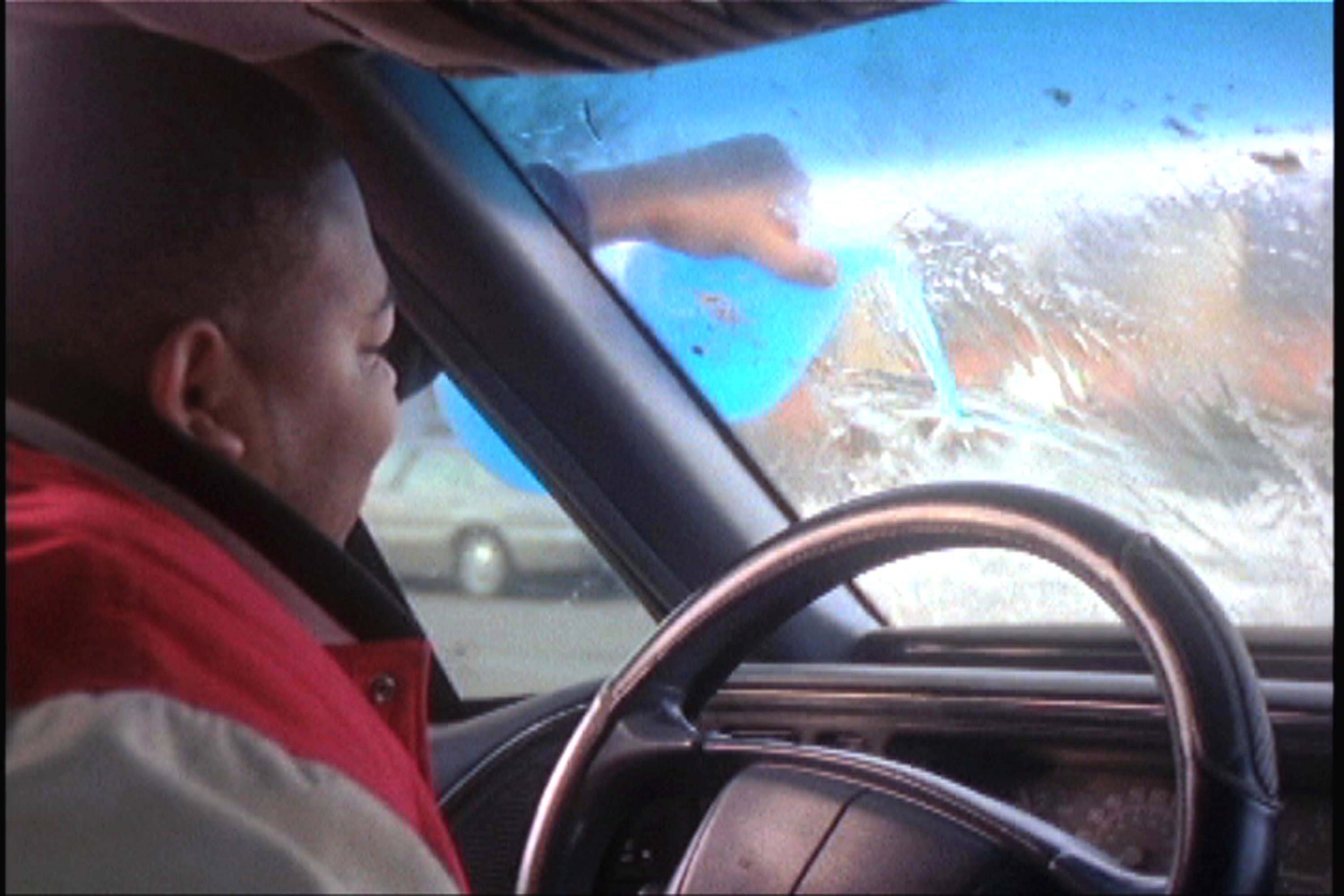
News
News Flash: Memory Shop and Anime Zakka to Open in Harvard Square

News
Harvard Researchers Develop AI-Driven Framework To Study Social Interactions, A Step Forward for Autism Research

News
Harvard Innovation Labs Announces 25 President’s Innovation Challenge Finalists

News
Graduate Student Council To Vote on Meeting Attendance Policy

News
Pop Hits and Politics: At Yardfest, Students Dance to Bedingfield and a Student Band Condemns Trump
Kevin Jerome Everson: Dignity in the Everyday

When certain identities are underrepresented in mainstream media, it becomes easy to rely on all-encompassing—and supposedly universal—narratives to see, to construct, and to interpret.
What happens when we notice the careful ways black artists build entire worlds? We should consider details and gestures that comprise a life: a pendulum-swinging pair of hips as a man mimes the rhythms of boxing in order to warm up, waiting for a broken car battery to reheat itself in the unforgiving cold, the intricate execution of a braid making its way down the tender crown of a head. This world building spells the possibility of an alternate future. While viewing “Black Panther” earlier this week, I wondered what art would look like if this were the standard—blackness in the background and foreground, blackness in the extras you don’t pay attention to and in the main characters you want to be.
This felt possible to me two weeks earlier when I was at the Harvard Film Archive, which was running a two-week series of several works by the Ohio-based filmmaker Kevin Jerome Everson. Titled “Cinema and the Practice of Everyday Life,” the series featured 22 out of some 144 films, a testament to not only Everson’s work ethic, but also his determination to painstakingly capture the world he knows best. Not once did a white—or non-black, for that matter—person appear. This felt like both the most and least natural thing in the world.
Everson attended two of the screenings. I attended the second, which featured seven films: “Round Seven,” “Ears, Nose and Throat,” “Undefeated,” “Emergency Needs,” “Fe26,” “Company Line” and “Ninety-Three.” As he fielded questions from the audience, a pragmatic energy radiated from his body. Everson seemed to be a man who worked not from a vantage point of self-serious intellectual pursuit, but rather from one of unadulterated, down-to-earth joy.
As the title of the series suggests, Everson emphasizes the quotidian throughout his work. His films often take place in seemingly-mundane locales: medical offices, basketball courts, basements, sidewalks. Despite their simplicity, these settings become sites where the past and present merge, which in turn allows Everson’s films to read as grounded and embodied historical texts. In the opening scenes of “Company Line,” workers in Mansfield, Ohio relay stories about when, how, and from where families living in their neighborhood had arrived. As they name cities and states, it becomes clear that their familial lineage is part of the Great Migration, the mass movement of black Americans north during the earlier part of the twentieth century. Here, as well as in other films, Everson explores the role of labor and socioeconomic mobility as an integral part of the proliferation of black life.
In Everson’s films, history is not merely expressed through image, but also through sound. In “Round Seven,” Everson reimagines and stages an infamous match between two Mansfield boxers, Art McKnight and Sugar Ray Leonard. Cut in between each “round” is a return to the modern-day, when an unnamed woman circles public spaces holding a scorecard, her body a stand-in for the scorekeepers of the past. As this occurs, the past unfolds into the present, amplified by continuous narration of the match. This voice-over is authoritative, a voice that contains and channels history. In “Ears, Nose and Throat,” the mechanic beeping of a hearing test collides with a woman’s account of witnessing a shooting, raising questions about the role of the black woman’s body as both witness and instrument.
During the screening of “Company Line,” a few members of the audience chuckled when an industrial worker appeared on-screen wearing a Harvard letterman jacket. I wondered what this reaction revealed about the covert class dynamics in the room and about the position of many audience members as Cambridge residents and affiliates of an “elite” institution, as people who had the time and energy to look at a blank screen and wonder about the life of “Others.” What, exactly, was so funny?
Since viewing Everson’s films, I find myself thinking more about the nobility of physical labor. I think and work within a bubble that values intellectualism, and very often the esoteric or avant-garde. Yet there is much labor that goes unseen in the slim hours of the day, when I am nearly-late on an assignment, tucked into the cavernous basement of Sever or the tidy cubicles of the library. Meanwhile there are bodies shifting into movement, clearing the snow, spreading the salt, unlocking the doors.
Through both subject matter and practice, Everson honors this process of making-as-being, and keeps a gentle watch on the gestures and essential contributions of the people society often disregards
—Staff writer Elodie A. Saint-Louis' column, "In Total Darkness," is about black contemporary art in the Cambridge and Boston area.
Want to keep up with breaking news? Subscribe to our email newsletter.
